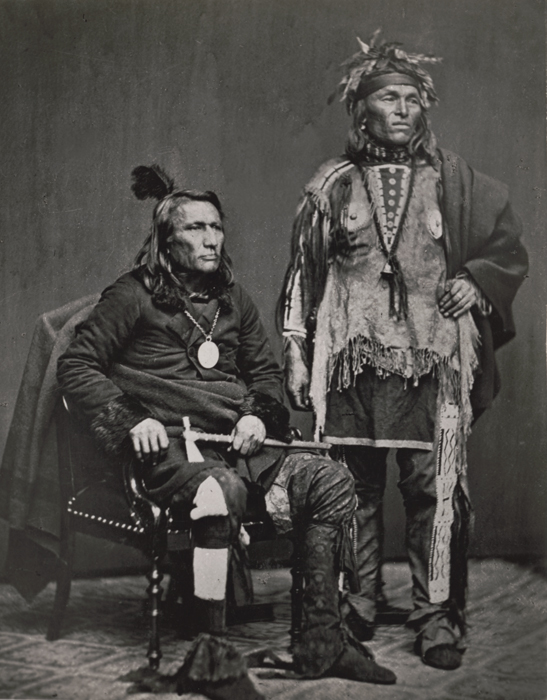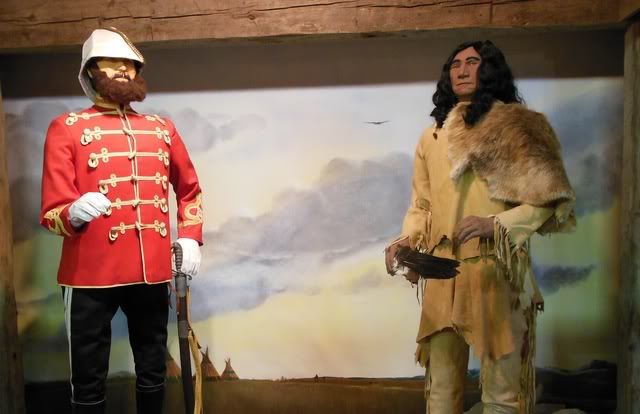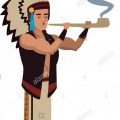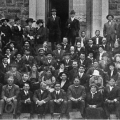
One hundred years ago, in 1916, American government policies regarding American Indians were emphasizing assimilation: like other immigrants, according to the assimilationist mantra, Indians would become absorbed into the great American mass. While immigrants from other countries could become citizens, most Indians were not citizens. Under the terms of treaties with the United States, Indians were supposed to have some hunting and fishing rights as well as land rights. Briefly described below are some of the Indian events and issues of 1916.
Citizenship:
The Supreme Court in United States v Nice found that U.S. citizenship
“is not incompatible with tribal existence or continued guardianship, and so may be conferred without completely emancipating the Indians or placing them beyond the reach of congressional regulations adapted for their protection”
This was a case involving the sale of whisky and other intoxicating liquors to Sioux Indians in South Dakota. The Court found that the Sioux allottees remained tribal Indians and were thus under national guardianship which means that Congress has the power to regulate or prohibit the sale of intoxicating liquor to these Indians.
Congress:
Congress passes a new law regarding the leasing of Indian lands. Marjane Ambler, in her book Breaking the Iron Bonds: Indian Control of Energy Development, reports:
“The law did not provide for tribal consent: instead, the Secretary of the Interior would set the terms, thus continuing the policies of the era.”
Indian Office:
The Indian Office, now known as the Bureau of Indian Affairs (BIA), launched programs to deal with the three greatest health problems of American Indians: tuberculosis, trachoma, and infant mortality.
With regard to infant mortality, the BIA began a “Save the Baby” campaign. In his work on the Northern Cheyenne in Montana, anthropologist Gregory Campbell, in American Indian Nations: Yesterday, Today, and Tomorrow, reports:
“From all indications, the program operated under the assumption that the infant mortality problem was due to cultural ignorance and incompetence of Cheyenne mothers, rather than malnutrition, unsanitary living conditions, and cultural oppression.”
Fishing Rights
When the Indian nations in the Pacific Northwest signed treaties with the United States in 1855—the Stevens treaties (negotiated by Territorial Governor Isaac Stevens—they had retained their aboriginal fishing rights. In general, the states tended to ignore the possibility of Indian fishing rights.
In a case involving Lummi and Yakama fishing rights, Washington Supreme Court Justice Bausman wrote:
“The premise of Indian sovereignty we reject.”
He goes on to say that Indians are regarded as “mere occupants, and incompetent occupants, of the soil” and that the Indian
“as a child, and a dangerous child of nature, to be both protected and restrained. In his nomadic life, he was to be left, as long as civilization did not demand his region.”
In his book American Indians and the Law, law professor Bruce Duthu notes:
“The state of Washington maintained its posture of opposition toward Indian treaty fishing rights well into the modern era.”
Duthu goes on to say:
“Washington openly defied judicial precedent, federal treaty law and a growing activist Indian community in challenging the nature and scope of treaty-protected fishing rights.”
In Washington, in United States v Seufert the court found that an Indian had a right to operate a fish wheel even though fish wheels were not being used when the treaty was signed. According to the judge:
“I see no reason why Indians may not be permitted to advance in the arts and sciences as well as any other people, and, if they can catch their supply of food by a more scientific and expeditious method, there exists no good reason they may not be permitted to do so. Even more, they ought to be encouraged to adopt the more modern and advanced ways of prosecuting their enterprises.”
Jurisdiction
In the United States versus Quiver, the United States Supreme Court overturned the conviction of Dennis Quiver, a Sioux living on a South Dakota reservation, for adultery. The state of South Dakota had argued that federal jurisdiction over Indians was limited to offenses by an Indian against the person or property of another Indian and since adultery did not involve person or property, this offense could be prosecuted under state law. The Supreme Court disagreed with this argument and found that state law did not apply.
Indian Labor
In Arizona, over 100 Tohono O’odham workers joined in a general strike at the mine at Ajo. Mine owners appealed to the Catholic priest to urge the Indians to go back to work. However, the Indians joined the local labor union. The strike was put down by federal troops.
Land Claims
In Oregon, the Hanis Coos, the Kuitshes, and the Siuslaws filed a suit in the Court of Claims for lands lost to the United States. This was a part of a campaign for land claims settlements by George B. Watson (Coos/Coquille), a graduate of the Carlisle Indian School.
Alcohol
In Wisconsin, the State Supreme Court upheld the prohibition of the sale of alcohol to full-blooded Indians.
Water Rights
In Oregon, the Bureau of Indian Affairs asked the Justice Department to file suit on behalf of the Umatilla so that they might have sufficient water to irrigate their crops.
Art
In Alaska, explorer, writer, and artifact collector Harold McCracken purchased two Tlingit headdresses at the village of Hoonah. One of the headdresses has a formline design crest animal painted in red and black. The other has a frog crest which is also done in formline design. These are ceremonial objects which are used in potlatches and should be inseparable from the ceremonies for which they are intended.
In Alaska, a visitor to the abandoned Tlingit village of Tuxekan counted 125 totem poles still standing.
Deaths
In California, Ishi, the last member of the Yahi tribe, died of tuberculosis. Following Yahi custom, his remains were cremated. However, his brain was sent to the Smithsonian Institution for further anthropological study.
In Washington, Palouse elder Chowatyet, the brother of chief Thomash, died. His body was wrapped in buckskin, placed in a long dugout canoe, and buried on an island in the Snake River.
In Washington, Palouse elder Waughaskie died at the age of 89. He was buried at the old village of Palus in a star-spangled velvet shirt. In their book Renegade Tribe: The Palouse Indians and the Invasion of the Inland Pacific Northwest, Clifford Trafzer and Richard Scheuerman report:
“Over 250 Palouses had been laid to rest in the same cemetery, and Waughaskie became one of the last of his people to be buried there.”



Leave a Reply